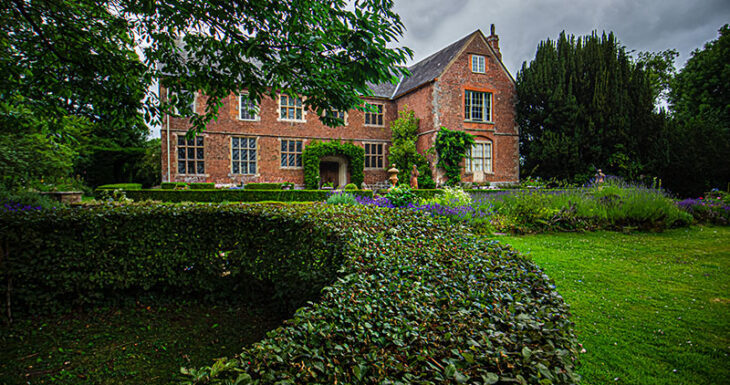Hellens Manor
Much Marcle, Herefordshire, HR8 2LY

Hellens is one of the oldest dwellings in England. It is primarily composed of Tudor, Jacobean and Georgian architecture, but the foundations date from the 12th century. The story of Hellens and its inhabitants connects with key events throughout 1000 years of British history. Earl Harold Godwinson, later King Harold II is one of the manor’s first recorded owners. It passes, by right of conquest, to William the Conqueror in 1066. He gifts it to his standard bearer at Hastings, Walter de Lacey, who in turn gives the tithes to Benedictine monks from France. The de Balun family are identified as Lords of the Manor from 1096 – a noble family who are witnesses to the signing of the Magna Carta in 1215. Isolde Mortimer, widow of Walter de Balun, welcomes her brother Roger Mortimer, Isabella Queen of England and the future King Edward III to the Manor at Much Marcle in 1326. Sir James Audley, Isolde’s great nephew and one of the heroes of Froissart’s Chronicles, passes a life lease of his lands in Much Marcle, including the Manor, to Walter de Helyon in 1369. Walter’s ancestor John de Helyon had fought alongside James Audley and Edward, the Black Prince at the Battle of Crecy. The Manor at Much Marcle becomes known as de Helyon’s House later corruped to Heliun and then Hellens. Walter de Helyon passes the lease to his daughter Joanna who marries Richard Walwyn. The Walwyns hold their Courts Baron in the old Hall and grow in influence. A later Richard Walwyn is knighted by Mary Tudor in 1554 and prepares a room at Hellens in anticipation of her visit. In 1619 an entry in the Court Rolls reads ‘Hellens ruinoso est’ but it is restored through the generous dowry of Margaret Pye, wife of Fulke Walwyn. Margaret and Fulke’s initials and the date 1641 can be seen on the Dovecote. During the Civil War the Walwyns fight for the King. The family priest at Hellens is killed by rampaging Roundheads and the house is sequestered by Cromwell’s men. The house is restored to John Walwyn in 1660. Hetty Walwyn is imprisoned at Hellens for 30 years until her death in 1728 following a failed elopement. Hellens passes into the Noble family. William Noble was High Sheriff of Herefordshire and he added the Walwyn name to his own. Charles Walwyn Radcliffe Cooke is born at Hellens in 1840. Known as the MP for Cider, he persuades Henry Weston to develop his cider business. Helena Gleichan, painter and great-niece of Queen Victoria, purchases Hellens from the Cooke family. She stores paintings from the Tate Gallery in the Stone Hall during the Second World War, and organises her 80 estate workers into a local home guard. Hilda Pennington Mellor buys Hellens from Helena Gleichan in 1943. Her husband is Axel Munthe, author of The Story of San Michele, an autobiographical account of his life and work as physician and psychiatrist. Hilda’s son Malcolm Munthe establises the Pennington Mellor Munthe Charity Trust in 1982 to protect the family treasures for the nation and to share them with the community in perpetuity. Today Hellens remains a home to Adam Munthe and his family.
